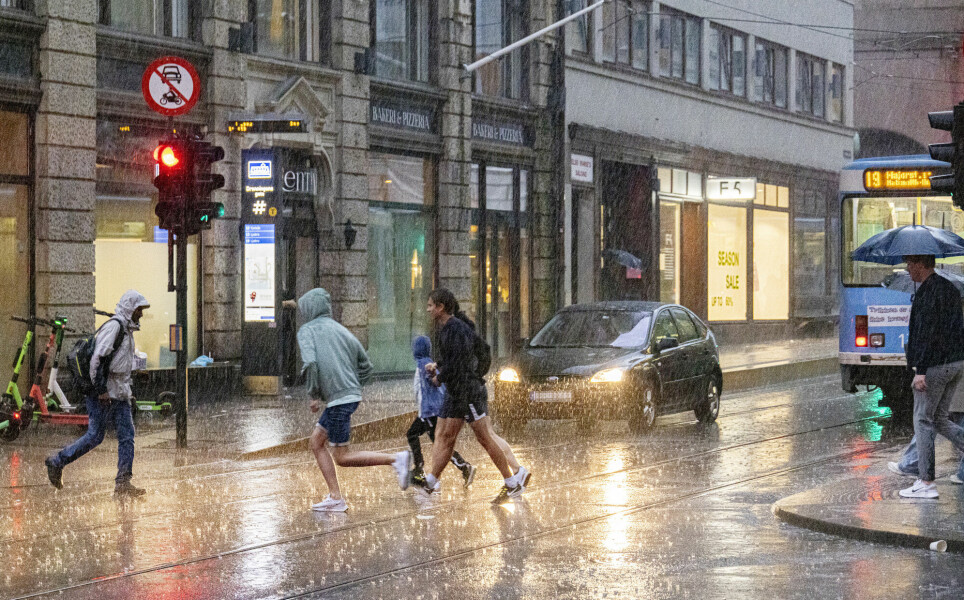
Deadly heat and extreme rainfall:
This is what the world will be like if the temperature rises by 3 degrees, according to researchers
“It is very likely that we will reach three degrees. I consider 1.5 and 2 degrees to be almost unattainable. Now the question is how close to three we will get,” says one Norwegian researcher.
The recent climate summit in Glasgow ended with many countries announcing new goals and plans. The future for the Paris Agreement climate goals now seems bright.
“What countries have reported now is closer to two degrees than three degrees,” says Helge Drange, a professor at the University of Bergen and researcher at the Bjerknes Center for Climate Research.
“At the same time, we know that none of the international agreements have resulted in achieving goals so far,” he said.
Drange nevertheless thinks we will be able to avoid three degrees.
Hans Olav Hygen, a climate researcher at the Norwegian Meteorological Institute, is not as optimistic.
“It is very likely that we will reach three degrees. I already consider 1.5 and 2 degrees to be almost unattainable. Now the question is how close to three we will get,” he said.

Three million years ago
If this is true, what role will just one extra degree play?
To put it in perspective, Hygen points to the previous ice age. At that time, the global average temperature was five degrees C colder than the last half of the 20th century.
“And Oslo was covered by two kilometres of ice,” he said.
It’s hard to imagine 2000 metres of ice over your head. The high-rise buildings in today's Oslo would be trifles in comparison.
Drange points out that the last time the Earth’s average global temperature was 3 degrees warmer than pre-industrial times was three million years ago.
“Modern man has been on Earth for 300,000 years. So this is totally beyond anything that humanity as a species has experienced,” he said.
It’s not the end of the Earth, Drange said. But everything that humankind has built is adapted to the climate we have today.
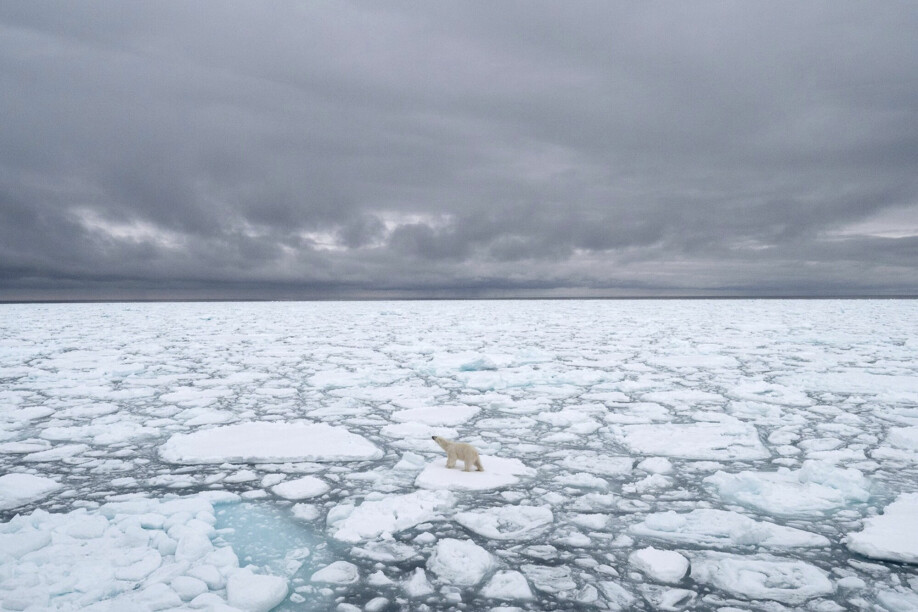
Requires a great deal of energy
The global average temperature has now risen by 1.1 degrees since pre-industrial times.
The latest report from the UN Climate Panel confirms what we have heard before: We are already experiencing an increase in the frequency of heat waves and unusually high temperatures. Human-caused emissions have probably contributed to more drought in some regions.
Extreme rainfall has become heavier and more frequent since the 1950s in most places. The sea has risen by 20 centimetres, and glaciers and permafrost have begun to melt.
For every half degree the Earth warms, the stronger these effects that we have already begun to notice will become. It is both so simple and so complex, says Hygen.
At the same time we are beginning to move into unknown territory, since it has been a very long time since the Earth was three degrees warmer.
One degree of warming is usually not experienced as much.
“The temperature can fluctuate 15 - 20 degrees during a day. But from a global perspective, raising the global temperature by one degree requires an extreme amount of energy. This energy is what is causing the effects we see,” he said.
Not just two degrees
The Climate Panel's report on the difference between 1.5 and two degrees showed that even a temperature increase of two degrees will have nasty consequences.
These include:
At 1.5 degrees, the Arctic is expected to become ice-free in summer once per century, while the probability increases to at least once per decade with 2 degrees of warming.
Seventy to 90 per cent of tropical coral reefs will disappear at 1.5 degrees, while virtually everything will die out at a warming of two degrees.
It will get hotter
The UN Climate Panel will release a report in February that addresses the consequences of climate change. The report will provide more information regarding what the world can expect in a warmer future, but here’s what we know right now.
If the average global temperature increases by three degrees, that means temperatures on land will increase even more, by an average of 4.5 degrees, Drange said.
The kind of heat waves that will result from a three degree increase is something we should avoid with all our might, says Bjørn Samset. He is a physicist and climate scientist at the CICERO Center for International Climate Research.
Heat waves that now occur every tenth year will approach becoming an annual event under a three-degree scenario, meaning they could happen eight to six times a decade.
Extreme heat waves that currently occur every 50 years are expected to occur 30 times as frequently. But this will vary depending on the location.
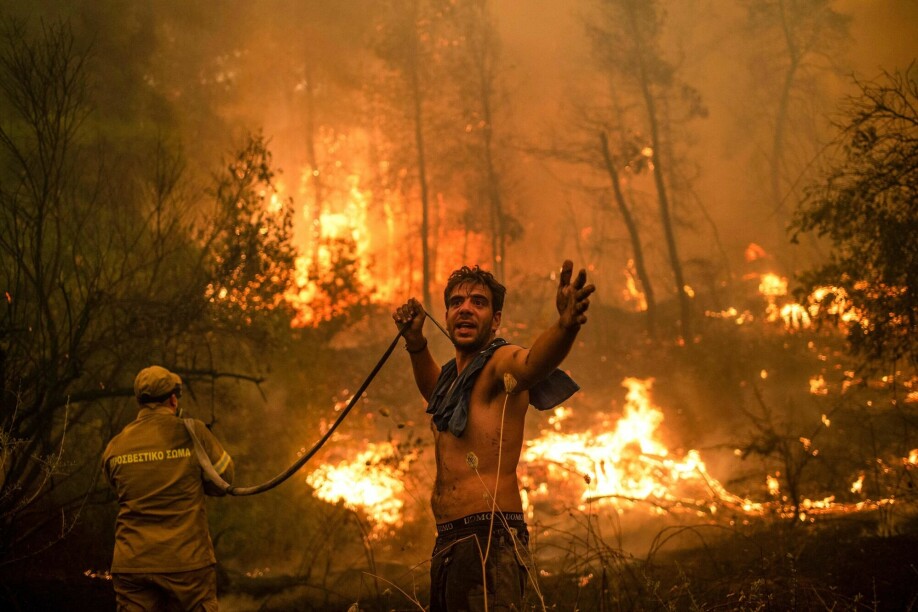
Heat in several places
The heat waves will be particularly severe where the temperature is already at the edge of what we can tolerate: the Middle East, India, southern China, central Africa and parts of South America.
There have already been severe heat waves in these areas, to the point where it is difficult for people to stay outdoors on the hottest days, Samset said.
“We can handle that if it is only one day, but if it starts to be two, three, four days in a row, then you either have to be in a room with air conditioning, or you get heat stroke,” says Samset.
The temperatures get so hot that the body loses the ability to cool itself, Samset said.
“It's the horror scenario. And the risk of these kinds of events increases quite markedly between 2 and 3 degrees,” he said.
Difficult to change society quickly enough
In India, for example, just under ten per cent of the population have access to air conditioning.
In the future, people can to some extent adapt to more frequent heat waves. But if the warming climbs to three degrees, the changes may happen too quickly for people to keep pace.
“We can’t possibly change the whole society in time for two billion people, which we are probably talking about here. We have to build on the society we have,” says Samset.
“This is one of the reasons that two degrees has to be set as an upper temperature goal. If we exceed this limit, the consequences will begin to be very substantial for society in many ways, as well as for the natural environment,” he said.
How we work together will determine the outcome
It’s not just how hot it will get that will determine how big the consequences will be. How we adapt and how vulnerable society turns out to be will play a big role.
An example of this is the heat wave in Europe in 2003. Tens of thousands of people died, especially the elderly who lived alone.
“We have learned from this experience, and we see that far fewer have died in subsequent heat waves. Nevertheless, the consequences for the environment are just as serious,” Samset said.
The experience of living in a world that is two or three degrees warmer will also depend a lot on how countries work together. This is something researchers who work with climate risk from a societal perspective are looking at, Samset said.
“We see that a future where we have strong international cooperation, where we are able to exchange technology, help and what is needed, the consequences of climate change will be smaller, even if they by no means disappear,” he said.
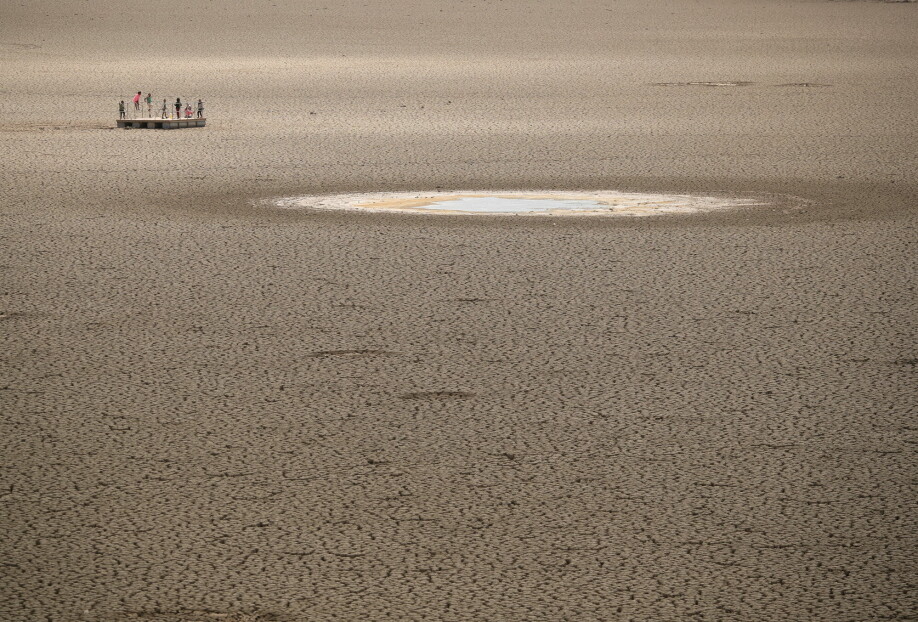
Dryer than before
Climate change is expected to increase the chance of droughts in a number of places.
“Two things will push this in the wrong direction,” Drange said.
One is that the temperature will increase. This means more evaporation from the soil. And if there are also areas that receive reduced precipitation, on average, there can be prolonged droughts.
“Prolonged droughts are expected in the summer in southern Europe, the USA and Australia,” says Drange.
The Climate Panel has said that droughts affecting agriculture or an ecosystem that previously occurred once a decade in arid areas will be likely to occur every four years in a two degree warmer world.
If it gets four degrees warmer, this frequency will increase to around every other year. The projection for what will happen if temperatures increase by three degrees lies somewhere in between.
Norway in a better situation than many
Drought and heat will affect food production, says Drange.
“We have examples from the heat wave in Europe in 2003, a number of heat waves in the USA and from Russia in 2010. When the large food producers have problems, the global food price goes up. Here, the poorest suffer the most,” he said.
The situation will improve in some areas, says Hygen.
“There will be areas that are a bit marginal today where things will improve. In that context, Norway will be in a better situation than many,” he said.
“But we in Norway are very dependent on the global situation, so we can’t be distracted by the fact that the situation may be slightly better here,” he said.
Norway will face its biggest challenges from floods and water if the temperature rises by three degrees. But it will be possible to adapt.
“What we especially have to work on in Norway is avoiding problems from extreme precipitation, floods and landslides,” Hygen said.
Norway is also experiencing a number of other effects from climate change, but those will not be addressed here.
In general, areas that are already wet will get wetter. A larger percentage of the precipitation will come as heavy rain. Other rain-related hazards will come from drastic changes in flood patterns and the monsoon pattern in Southeast Asia, Hygen said.
“Many, many people depend on the monsoon to work as it should,” he said.
Danger of desertification
For others, water shortages will be a problem.
Hygen says in a world that is three degrees warmer, desertification will make conditions especially difficult in areas close to deserts.
“I expect that the edge zones around deserts may be more difficult to survive in. Here there is a danger that it will be so dry that it will eventually be impossible to practice any kind of agriculture,” he said.
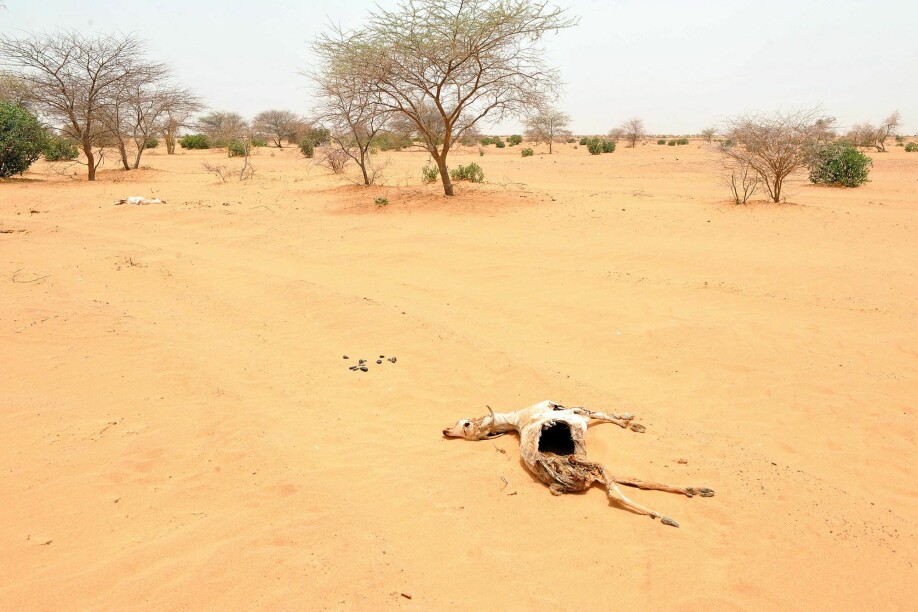
Difference in fire risk
It’s already clear that the danger of fire has increased. Forest fires have become stronger and are occurring in places that rarely or never burned before.
“Siberia has burned almost continuously in recent years, including during the winter, under the snow,” Drange says.
The risks associated with fire will go from high to 'extremely high', if the planet warms to around three degrees, says Samset. Needless to say, “extremely high” is the highest level.
“This is an example of something that will get significantly worse if temperatures increase by three degrees instead of two,” he said.
Faster sea level rise
Both Drange and Hygen find the idea of sea level rise in a warmer world particularly alarming.
The latest estimate from the UN Climate Panel is that the sea will rise by approximately 45-75 centimetres by 2100 in a scenario with medium-high emissions. This corresponds to a temperature rise of 2.7 degrees.
By the year 2150, the panel estimates a rise of around 65 to 130 centimetres under the same scenario, according to the Norwegian Environment Agency. The rise will continue somewhat in the following centuries.
In any case, the sea will rise by up to one meter, Samset said.
But the biggest question is the pace of the rise. If the warming is stopped at 1.5 to two degrees, humankind will have better time to adapt to the changes.
Low-lying coastal areas will be flooded
The rise in sea level will mean that some percentage of the world’s population will not be able to live as close to the coast as they do now.
Ninety per cent of Bangladesh, for example, is less than ten metres above sea level. The country will be hit by more severe floods and flooding as the sea rises. Several million people will probably have to move, according to Hygen.
“This is a country that is super densely populated and there is really no room for internal relocation. What does the world do then? That's a real question,” he said.
Currently, 230 million people live at elevations less than one metre above high tide, according to a study in Nature Communications.
“A lot of people live on the flat river deltas around the world, and when sea level rises, these areas will become uninhabitable,” Hygen said.
Cities can protect themselves against rising sea levels by building sea walls and other barriers, for example. Many cities will probably have to do exactly that.
It is not only the normal sea level that makes a difference, but also how high the highest floods on the coast will be.
In their special report on sea and ice, the Climate Panel wrote that 100-year floods along the coast will be an annual event in many places during this century. This was true for all scenarios experts looked at.
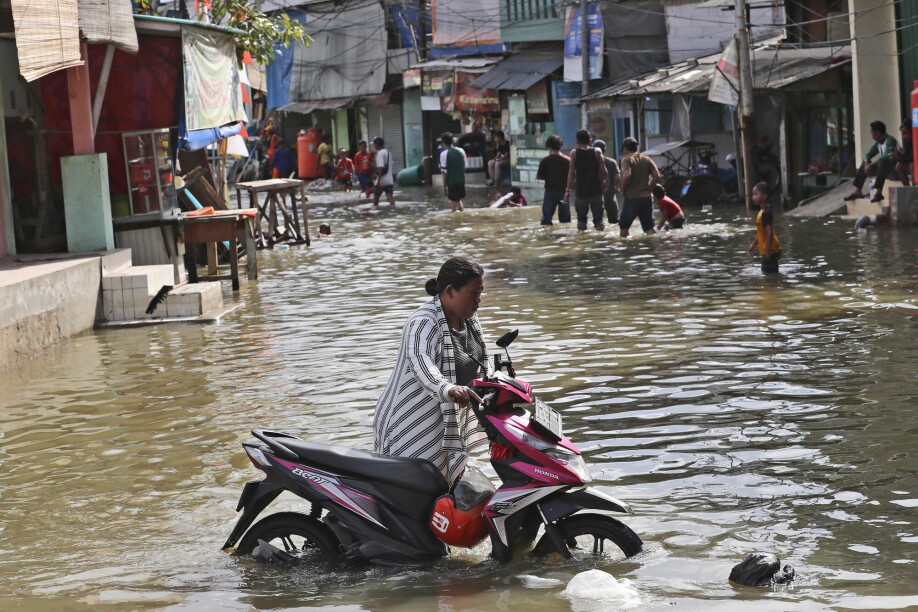
A glance at 2300
If the average global temperature increases by three degrees, we will enter a regime that the planet has been in before, with rapid changes in sea level, says Drange.
The sea may rise by 2 - 4 metres by 2300, he said.
It's a long time until then, and it’s anyone’s guess what the world’s cities will look like by then. But it's also closer than you might think.
“Now, when I stand and look down on the wharf in Bergen, it has been there for around 1000 years. When we go to vote, 100 or 200 years seems far in the future, but it’s not that far ahead,” Drange said.
“Think of all the infrastructure, all the coastal cities, all the history that we have along our coasts, all the food production, all the people who live there. There will be huge changes,” he said.
He also points out that rising sea levels will not be temporary.
“Increased sea level will last forever, as I usually say. Not mathematically forever, but until the Earth enters a new ice age, 20,000 to 50,000 - 60,000 years in the future,” he said.
The hotter we let it get, the higher the risk that uncontrolled melting will begin in parts of Antarctica, Samset said. In that case, the sea level will rise even faster, but this is not thought to be very likely.
“It's a house fire scenario. You don’t think it will happen, but if it does happen, the consequences are so enormous, you take precautions anyway,” Samset said.
Glaciers important for fresh water
Other consequences of a higher temperature increase are that mountain glaciers will melt faster.
Melting water from glaciers is an important source of water in many parts of the world, according to Samset's new book “2070”. Around a quarter of land areas in the world get their water supply from glaciers.
“Especially in South and East Asia, many people are dependent on meltwater from the Himalayas. It will be a while before the glaciers there disappear, but even a reduction will affect freshwater supply further down the mountains,” he said.
The glacial rivers are large and a number of countries rely on them, posing a potential source of conflict, Samset said.
Ecosystems are changing
In a three degree warmer world, more permafrost will melt.
“There will be significantly more losses a little over 2 degrees. The decisive factor is how many days are warmer than zero degrees, where you get melting conditions over a long period,” Samset.
Melting from permafrost emits greenhouse gases, making it more difficult to limit global warming. The melting will also affect ecosystems that are adapted to the cold.
In a three degree warmer world, there is a danger that terrestrial and marine ecosystems will change much more radically than if we manage to hold warming to 2 degres.
Fish that migrate north in search of cooler waters, ocean acidification, oxygen loss in some zones and changing conditions for marine plants are some of the things that can change the marine ecosystem. On land, animals and plants can be affected by drought and severe heat, fires, changing lengths and onset of seasons, changed migratory patterns and more.
“We already know that climate change affects animals and the environment today. People who work in these fields say that the effect gets stronger the hotter it gets,” Samset said.
“When it comes to something so fundamental to society, like the proper functioning of the natural world, this is a risk that we should avoid at all costs,” he said.
Easier to adapt to two degrees
Samset says that a warming of three degrees will greatly increase extreme weather compared to if warming is capped at two degrees. The Earth will have a climate and environment that are far from what we are used to.
“That risk is sky high. At three degrees, it is a question of whether our society can actually operate without very, very strong changes,” he said.
“The reason for the two-degree goal is that it’s thought we can manage to adapt with the infrastructures we have today. It will be expensive and difficult, but we can do it. But if we go to three degrees, then we’re in a place where one begins to doubt whether adaptation is possible,” he said.
References:
Sixth Assessment Report of the United Nations Intergovernmental Panel on Climate Change (IPCC) Working Group 1: The Physical Science Basis, 9 August 2021.
UN Climate Panel, Special Report: Global Warming of 1.5°C.
UN Climate Panel, Special Report on the Ocean and Cryosphere in a Changing Climate
Bjørn. H. Samset: 2070 – “Alt du lurer på om klimakrisen og hvordan vi kan komme oss forbi det” (Everything you wondered about the climate crisis and how we can get past it ), Cappelen Damm, 2021.
———
Translated by Nancy Bazilchuk
Read the Norwegian version of this article at forskning.no
































